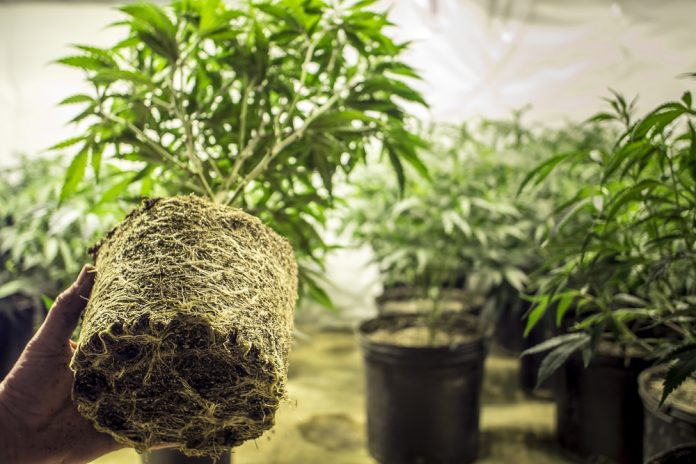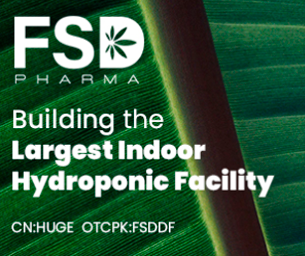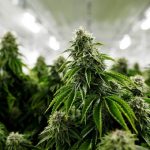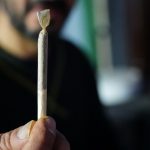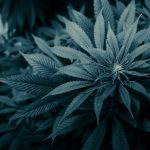Updates in science and the explosive growth of LEDs.
The last five years brought incredible developments to the world of cannabis lighting. From advances in light recipes, the infectious rise of Light-emitting diode lights (LEDs) across the industry, and to the upsetting of the long-heralded McCree Curve, cannabis science is finally becoming as visible as it deserves to be.
SPECTRAL LIGHTING GOES BEYOND RED AND BLUE
Director Bruce Bugbee, Ph.D., professor of the Department of Plants, Soils, and Climate at Utah State University’s Crop Physiology Laboratory led groundbreaking research, which could change our understanding of photosynthetically active radiation (PAR). Since 1970 researchers believed during photosynthesis, useable wavelengths exist within a range of 400 to 700 nanometers. Dr. Bugbee claims USU research provides evidence of photosynthesis occurring from photons beyond the 700-nanometer limit. This research contradicts the McCree Curve, published by Dr. Keith McCree.
While the focus of red and blue light on photosynthesis has been dominant in the field, Bugbee believes in separating the effect on photosynthesis and the impact on plant shape. According to his research, light quality does little to affect photosynthesis but greatly influences plant shape. By exposing lettuce to far-red photons of 730-nanometers, USU cultivated larger plants with larger leaves. This proves both plants respond to photons beyond the accepted spectrum, and the quality of light changes plant shape.
For photosynthesis, Bugbee states that light intensity is the dominant factor. He believes the conversation on light quality, including color ratios, is more critical concerning plant shape and secondary metabolism. The evidence USU supplied confirms that.
Bugbee suggests relying on third-party testing for photon efficacy. While efficiency measures watts in lighting, photosynthesis requires photons. Lighting efficacy measures how many micromoles of photons are produced per joule of energy consumed by a lighting fixture. Buying lights with high efficiency maximizes light quantity available for photosynthesis.
Over the last few years, the popularity of LED has exploded. Developments in LED technology have allowed these lights to go from 1.7 micromoles per joule five years ago to between 2.6 and 3.1 micromoles per joule today. The technology is continually advancing. Comparatively, high sodium pressure lights (HSPs) still have an efficacy of 1.7 micromoles per joule.
Once efficacy is mastered, color ratios can be used to influence plant shape. Bugbee was friends with McCree, and Bugbee believes the difference between their research is that McCree did not have access to LED lights. To Bugbee, access to LEDs is as revealing as the invention of the microscope.
LED LIGHTS SHINE AS THE RISING STAR IN CANNABIS LIGHTING
Although it was a niche option only years ago, 47% of cultivators now use LED lights in the propagation stage of cannabis. Readex Research, a third-party researcher, presented this data based on four years of data. Fluence, a leading producer of LEDs for cannabis cultivation, analyzed this data in an annual business report with Cannabis Business Times.
According to this data, LEDs use is growing across the board. While only 15% of cultivators used LEDs for flowering in 2016, 45% of cultivators reported using them for flowering in 2019. This is barely behind HPS, which 51% of cultivators use during the flowering stage.
Similarly, while only 17% of cultivators used LEDs for vegetation in 2016, the number has grown to 46%. The prevalence of LEDs in propagation increased from 21% to 47%. However, everybody is not going to change over to LEDs. Several cultivators report LEDs are technologically unproven and too expensive. LEDs are a convincing option, but not the only one.
SLOW AND STEADY, HSPS STILL BLAZE
According to a review published by the Department of Bioresource Engineering at McGill University of Montreal, Canada, there is no discernibly superior light.
- LEDs are optimizable by allowing control over periodicity, light quality, and light quantity.
- LEDs allow high-density production systems to maximize radiation transfers to cannabis by concentrating light spectral quality.
- LEDs’ ability to stay cool allows cultivators to place them within cannabis canopies, maximizing yields.
However, based on cost analysis, considering photon efficacy, and the costs of the fixture, The Department of Bioresource Engineering states that LEDs are five to ten times more expensive than HPSs. Their source for this claim is from 2014, so technological progress may have closed this gap. Still, HPS fixtures provide a broader uniform light across a wider area than LEDs during large scale production with uniformly spaced plants. Both technologies have low maintenance costs.
THE RISE OF VERTICAL FARMING
While vertical farming isn’t the dominant strategy used by cultivators today, it is steadily growing in popularity. Farming in such a way is ideal for the vegetative stage, and roughly a third of cannabis cultivators incorporate it.
Cannabis also flowers in vertical grows but only around a fifth of people employ that method. Still, for both vegetative and flowering stages, vertical farming is picking up steam. Vertical cultivation can make it harder to ensure all crops are getting proper light. However, there are ways to ensure that inconsistent lighting doesn’t become an issue.
“Inconsistent lighting is a considerable concern, “Michael Fisher, Designer and Builder at Higher Yields Cannabis Consulting told Cannabis Tech. “But an even greater concern, in my opinion, is inconsistent environmental controls from top to bottom in these grows. The rooms are so full it’s hard to get even airflow and control of temperature and humidity. It would help if you had an HVAC engineer who understands cannabis. Hopefully, someone who has done it before.”
ENFORCING LIGHT UNIFORMITY
Lightmapping addresses issues with light uniformity through data supplied throughout the grow cycle. By placing light sensors at various heights and by various plants, cultivators can examine how much light is being distributed across their grow room. Once they have the data, it’s a matter of adjusting their fixtures to reach the levels they want. Certain adroit cultivators use lightmapping to maximize the output of their LEDs, which are cool enough to be placed in canopies. However, advances in technology and research have benefitted every style of cannabis lighting. Every cultivator who opens up to the progress of this technology has a bright future ahead of them.

